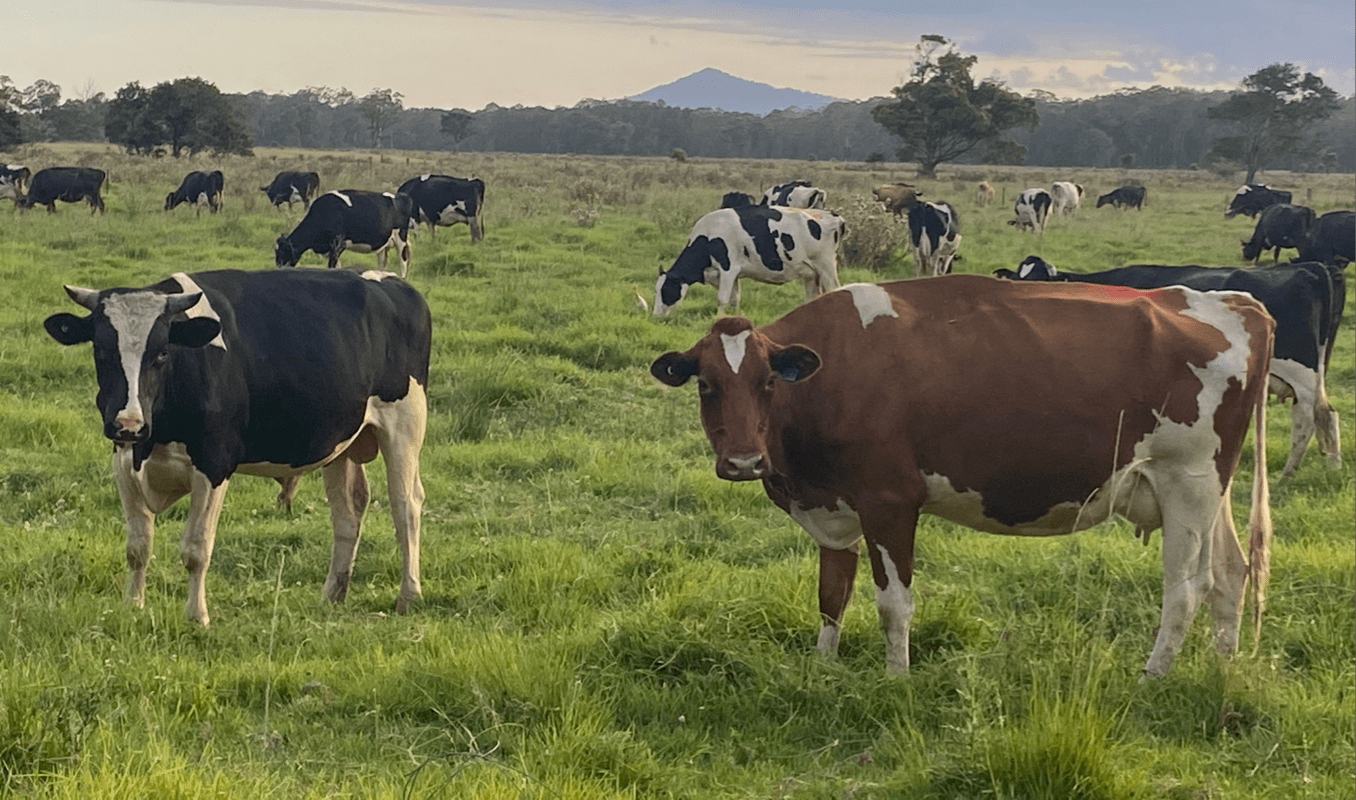


11/19/2021

A day in the life of an organic dairy cow…
The cows on our three farms have a pretty blissful existence, munching on fresh, green grass to their hearts’ content in vast fields with plenty of shade. Here’s what a typical day looks like for the 300 cattle on Bellinger Farm, 25km south of Coffs harbour in far north NSW, a stone’s throw from the beautiful sands at North Beach, Mylestom…
The fields are still shrouded in darkness when the cows hear the sound of Amreek’s bike approaching at around 4am as the farm manager makes his way along the sandy track to the night paddock where the herd has been sleeping.
Contrary to popular belief, cows don’t sleep standing up – they might have the odd light nap on their feet, but at night they find a comfy patch of thick rye grass to lie down. They only need around four hours of proper sleep as they ‘drowse’ on and off for up to eight hours during the day.
Their ears prick up when they hear Amreek as they know it means they’ll get to munch on some delicious organic grain while they’re being milked. Usually they’ll have started gathering by the gate by the time he arrives.
And they don’t need any persuasion to amble happily down the short track that leads to the milking shed. The younger ones trot along excitedly, jostling to get to the front so they’re milked first.
When they see the lights of the shed, the pace quickens still further.
Amreek’s wife, Raj is waiting there for her first batch of customers. The couple live in the farmhouse and their alarm goes off seven days a week at 3.45am. They both get ready as quietly as possible so their eight-year-old son, Ekam, doesn’t get woken up.
There are two rows of 30 stalls in the shed. The cows know the routine so the first 60 file in and find an empty stall before chowing down on their breakfast of ground wheat and barley with essential minerals while the milking machines gentle suck out the milk.
After just two minutes, the suction cups automatically detect that the udder is empty and release themselves. The cow then reluctantly moves on and begins the five minute walk to the lush day meadow and begins ripping up clumps of kikuyu grass and white clover to chew contentedly as dawn begins to break.
One of the perks of being a cow is that you never have to clean your room! After the last of the animals has left the shed, all the stalls and equipment are thoroughly washed with high pressure hoses and then disinfected so they’re ready for the next session.
To make sure there’s always enough juicy grass, the fields are divided up into paddocks so the cows can be rotated through them over the course of a month. A cow can eat 3% of its body weight every day (around 18kg of grass) and drink a bathtub of water. All of which means they produce six and a half buckets of manure to fertilise the rich alluvial soil.
Some days, the cows end up sharing their paddocks with kangaroos, emus and the occasional echidna or wombat. They all tend to ignore each other, though on sunny days they might share the shade of a blue gum or blackbutt tree.
At 3pm, the familiar sound of Amreek’s bike means it’s time for the second milking. Once they’ve feasted on some more grain, they’re ready to be taken to the night paddock where they’ll usually lie down, chewing the cud.
A cow usually spends eight hours a day chewing as grass takes a fair bit of digesting. Each piece of food is regurgitated and more saliva added to pulverise the cellulose so it can pass from the first compartment of the stomach to the next.
Finally, when all is quiet and dark and the cooling coastal breeze has been replaced by stillness, it’s time for some well-deserved shut eye. Amreek and Raj, meanwhile, are tucked up in bed by 8.30pm so they’re fully energised for when the alarm heralds the start of another day.